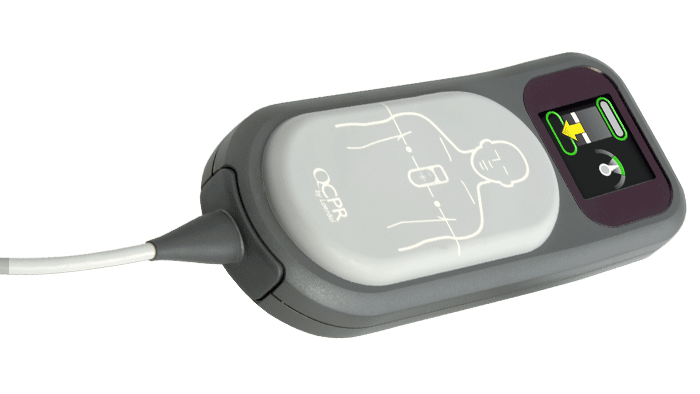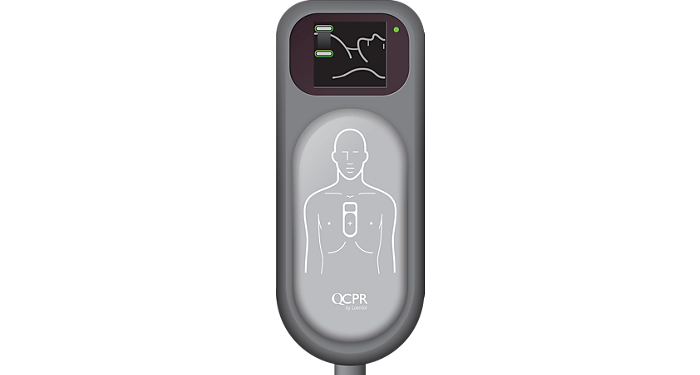How Good is
your CPR?
It's hard to know without data
One determining factor in a patient’s survival of a sudden cardiac arrest (SCA) is the quality of cardiopulmonary resuscitation (CPR). But until recently, there was no objective way to measure it. Q-CPR changes that. Q-CPR measures the quality of CPR compressions. You get real-time feedback so you can make adjustments as you administer them. And with HeartStart Event Review Pro, you can collect the data and review it for future improvements. With objective feedback, you get the information you need to improve CPR quality and enhance patient outcomes. Get more information on our EMS solutions.
"We were able to analyze the whole cardiac arrest and send them out a report card. The crews really take that to heart and they implement that feedback into their daily practice.” Scott Vivier Chief of EMS Henderson Fire Department, Nevada

What is Q-CPR?
Q-CPR is a tool that measures the 5 critical components of high-quality CPR that the AHA identified in 2013. Using voice prompts and easy-to-understand visual diagrams, Q-CPR gives you cues to adjust your CPR to AHA and ECR guidelines. You get not only compression information, but also ventilation feedback to reduce the risk of hyperventilation.
5 key factors in quality CPR
CPR is a key componen of cardiac resuscitation and a growing body of evidence shows that CPR quality is the most critical aspect of it. In fact, variations in the quality of CPR in communities and hospitals are linked to disparities in resusciation outcomes. In 2013, the AHA released a consensus statement that defined 5 factors that define quality CPR. By identifying these factors, emergency responders have tangible metrics to help improve the patient's chance of survival and increase the opportunity for a complete neurological recovery.
Make changes based on real evidence There are five factors that determine the quality of CPR, and Q-CPR and Event Review Pro measure all five. This means that even pre-shock pause can be accurately measured and time-synchronized into the case event report. Improving the quality of CPR is an ongoing mission. As new research reveals better ways to perform CPR, Q-CPR and Event Review Pro can be updated to reflect the new guidelines. With this information, you have evidence for evolving decisions about your protocols.
Surprising data leads to measurable improvements for the Henderson Fire Department
“Our providers were surprised at how poor their CPR was. First of all, they were going in way too fast. The second thing that they were surprised to find was that they got tired very quickly, and they weren’t pushing hard enough.” Scott Vivier Chief of EMS Henderson Fire Department, Nevada
In 2008, Scott Vivier wanted a technological solution to improve his department’s CPR. By using Q-CPR for real-time CPR feedback and then later reviewing the event with Event Review Pro, he got measurable improvements in his patient outcomes. Scott attributes his success to better CPR.
Similar to post-game analysis for professional athletes, medical responders learn from their past resuscitation performance and apply it to future resuscitations. CPR performance review has board applicability for improving resuscitation."
- Dana Edelson, MD. director of Clinical Research for Emergency Resuscitation Center at the University of Chicago Medical Center.






